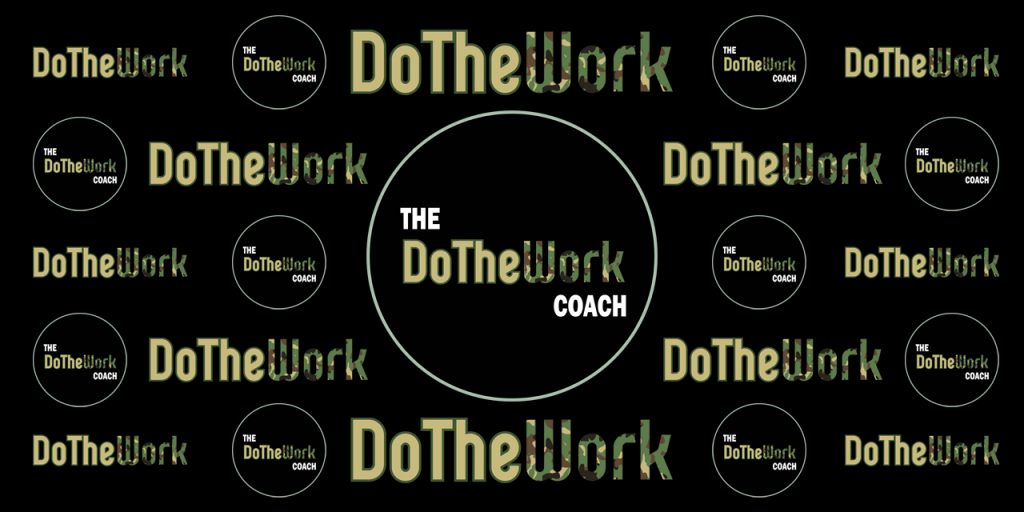Why does weight loss slow down?…
Often when people begin a new regime of weight loss they experience a fairly substantial loss of weight in the first couple of weeks. I think it’s important firstly that I address why this happens because often it can be misconstrued and can cause disappointment down the line.
When you live an inactive lifestyle that’s made up of quite a lot of carbohydrates, alcohol and as I mentioned a distinct lack of movement, you can also expect this person to not have a consistent flow of hydration (water) coming into the body.
All of these factors combined (inactivity, dehydration, alcohol & poor diet) can cause the body to retain fluid (water). When people begin a new fitness journey they immediately reverse a lot of these factors as they cut the booze down and drink more water, they start moving and they often go on fairly restrictive diets and so within a week or two they see a substantial loss on the scales which can be anywhere from 1-5kg (depending on their size).
As a result of this the body begins to flush out fluid because it’s operating more efficiently now and doesn’t feel the need to ‘hold onto’ or ‘retain’ fluid. Some quick maths for you here, 1l of water = 1kg of weight. It’s inevitable that the first bout of weight loss will almost all be water weight which will cause two things…
- The scales will drop and make you think you’ve lost a lot of fat
- You will appear less bloated because you’re holding less water
Now of course both of these things are good but what they can do is play havoc with your expectations of what is to come. People often report disappointment because they haven’t lost more than a kg the following week because they compare it to the water loss initially. What we want to focus on really is how much body fat we are losing. I don’t like to use body fat monitors because they are largely inaccurate. A general rule of thumb with weight loss is…
“If it comes off overnight, it’s probably not body fat, it if comes off over time steadily, then you’re probably losing body fat.”

I advise my clients that they should be content with anywhere from 0.5lbs upward on the scales each week which is around 250g and you might think that’s very small.
However, losing body fat each week in a steady manner is much better than not making progress at all and it can be done with some very small changes to your lifestyle which makes it sustainable long-term. Often the expectation comes from comparing it to the initial weight loss and I think it’s really important for me to share with you why that’s not a good strategy but just as important to explain why.
So now that’s cleared up I want to share with you why weight loss slows down in the long-term too. This is slightly more complex and there are a lot more moving parts to it.
Why does weight loss slow down?
When we look at the long-term scale of weight loss we often find that as progress is made, the rate of weight loss slows down. Typically this happens because people tend to keep the variables the same over time so they might start by training 3 times per week and continue to do that. They might start with 10,000 steps and continue to do that. They also might start by eating 1800kcals and continue to do that. The variables remain constant and then gradually weight loss slows down and people get quite baffled as to why this is.
“What got you to where you are now, might not be what will get you to where you want to be.“
The reason for this as I say is quite complex but if I’m going to break it down to make it as simple as possible for you…
Basal Metabolic Rate
Imagine your starting point is 100kg and you lose an initial 10kg in 3 months.
Now you have a bodyweight of 90kg and everything else has remained the same.
Firstly we must consider your calorie intake of 1800kcal. The amount of calories that we are burning at rest will have reduced (this is known as our basal metabolic rate or BMR) because we literally have less of us to supply with energy and therefore any excess energy may become redundant and potentially stored (as body fat).
Basically as we are losing weight we use less energy (calories) as we become lighter/smaller. This is one of the key contributors to why weight loss slows down.
The Impact on Training & Movement (steps)
As well as seeing a reduction in the amount of calories we burn at rest as we lose weight, we will also experience a reduction in calories expended through movement and exercise too. This is impacted from two different angles. The first one being similar to the reasons already mentioned for the BMR – as we become lighter, we required less energy to execute the same activity so as well as burning fewer calories at rest, we burn fewer calories when we move and exercise too, of course this includes steps and training in the gym.
The other side of this is probably a less obvious one to consider. When we commence a new gym programme or start to increase our steps from what we did previously, our body initially finds it quite difficult to do and therefore requires more energy (calories) to complete the activity. However as we become more competent (fitter) at the activity, we become more efficient. This means that to complete the same activity we require less energy (fewer calories) than what we did initially.
Essentially we become more efficient and burn less energy to achieve the same result which is quite a useful thing for the body to do for everything apart from the goal of weight loss (unfortunately).
So What Do We Do?
In order to continue to lose weight we have a few options that we can plug-in to avoid the seemingly inevitable weight loss plateau. The options are essentially to control our energy input (calories ingested) or our energy output (calories expended). Of course the simple option would be to manage energy input which means to reduce the amount of calories we eat.
The problem with that however is that you can only take that so far without calories being too low leading to fatigue, burnout, lack of energy, low mood, low sex drive – the list goes on and on. This is especially true if the starting point for calories is already fairly low (which it normally is).
I personally prefer to instead manipulate the energy output variables. We know that in order to continue to achieve weight loss that we’ll probably need to increase this because our body is becoming more efficient.
We can do this in a variety of ways but the two most obvious ones are to increase our step count. If we’ve been averaging 10,000 steps per day then we might consider to move it to 12,000 per day. If we do this and we find it kickstarts the weight loss we want then we don’t need to change anything else.
Another option is to change our training frequency or intensity. In most cases, most people are already operated at or close to their training frequency limit whether that be due to time constraints or simply from an under-recovery standpoint so ideally I’d start with manipulating their step count.
However if I was going to target my training to make changes, I’d look to add or increase the volume of cardio that the client did. For example if they are completing currently 3 sessions per week which included 15 minutes of cardio, I’d look to increase the cardio element to 20-25 minutes. Over the course of a week that’s an increase of 15-30 minutes which is basically an extra cardio session. This will combat the increase in efficiency that our body is under-going as a result of losing weight and getting fitter/more efficient.
Progressive Overload
The other consideration we must always be thinking about is the principle of progressive overload.
This is basically the principle of making sure that your workouts get harder over time. This allows us to continue to challenge our body with a stimulus that is changing. The same applies here, if we lift the same weight for the same number of reps for too long, we do not give the body a reason to adapt e.g. get stronger or build muscle etc. We become efficient at the thing we do and therefore it becomes easier which is great but it’s not so great for our results.
We can impact the amount of energy we expend by applying this principle to our training week on week. I personally don’t like to place much of an emphasis on calories in my clients workouts however for the purpose of what we’re talking about now it will have a small impact and with weight loss, we’ll take everything we can get to avoid the plateaus – so although it’s not the main focus, by applying progressive overload for strength and muscle gain reasons, we can reduce the impact of weight loss plateau too.

Hitting the Wall
People hit the wall because they don’t consider the principles I’ve highlighted in this blog. They don’t acknowledge the reduction in calories expended through BMR, efficiency improvements and they rarely apply the principle of progressive overload to their training. Rather they keep their calories (input) the same and they keep their output (calories expended) the same and the efficiency improvement causes the plateau.
This usually happens to people within 3-6 months of beginning their journey as they continue to do the same group exercise classes or just follow the same order of exercises in the gym without any progression.
I must add that your workouts should be structured. You should be following a programme that consists of the same exercises for a period of time, normally 6-12 weeks in which you use the principle of progressive overload to create stimulus for your body to need to adapt to which normally includes increasing weight week on week within a similar rep range for weight training and increase duration or intensity for cardio. All of this should be tracked a measured because if it isn’t, how would you know that you’re progressing?
“If you don’t keep score, how would you know if you’re winning?”
As a coach, it’s very easy for me to identify what needs to be done either for a new client or a current client in order to get things moving again. I find that easy because I collect data and create a clear structure for my clients to work with.
In order to achieve substantial results over a span of time I believe this to be critical. People often want to experience the freedom of ‘winging it’ – this will work for a period of time before a plateau kicks in and the lack of consistent data means that you don’t actually know what to do to get the same result that’s now stopped which leaves you questioning whether it’s worth bothering at all.
Once again I think it’s critical that we’re able to recognise progress as it happens because that’s where we’ll find the motivation to continue rather than quitting because the results have slowed or stopped.
So now you have the understanding of why weight loss slows down, it’s time to put it into action and to #DoTheWork
If you enjoyed this blog, please share it with anyone who you think may need the advice.
Dale – The DoTheWork Coach
Claim your FREE Habit Hacks Cheat-Sheet…
One of the biggest reasons why people fail is because of their habits.
Did you know that up to 45% of our daily actions are automated?
People struggle to stop the things they want to do less of, and they struggle to stick with the things they know they need to do more of.
I’ve created a FREE resource that’ll help you understand why this happens and what to do about it. All you need to do it hit the button below.
You can also check out my other blog posts, including the ones where I share the stories of many of my clients, you can access those by simply clicking here.


